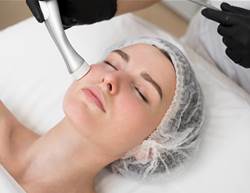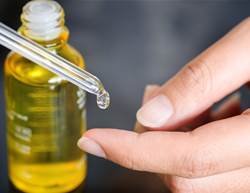No matter your age or fitness level, chances are you have cellulite somewhere on your body (some 80 to 90 percent of women do). And while everybody (and every body) is different, if you’ve been intrigued by dry brushing, the beauty trend that’s been popping up on social media and spa menu offerings lately, we don’t blame you.
Proponents of the practice - which simply involves rubbing a brush on your dimpled problem areas - swear that it diminishes cellulite and leaves behind super smooth, radiant skin. But, like most cellulite “cures,” is it too good to be true? We asked dermatologists to weigh in.
Back up: How does cellulite form in the first place?
The dimpling that’s known as cellulite comes from a layer of fat just below the surface of your skin. “Cellulite is formed by fibrous tissue bands pulling down on the skin between pockets of fat,” explains dermatologist Dr Heidi Waldorf. The result is that oh-so-annoying puckered look.
Unfortunately, cellulite predominantly affects women. Genetics, what you eat, how your body burns energy, hormonal changes, or even dehydration could play a role in its development.
What is dry brushing, exactly?
Dry brushing is just what it sounds like, says Dr Waldorf. Essentially, you take a soft-bristled brush and rub your skin with it in order to scrub off dead skin cells. It’s a basic method of exfoliation, yet there are a number of other health claims tacked onto it.
“Some posit that it also increases circulation to the areas brushed,” says dermatologist Dr Meghan Feely.
But while it may boost blood flow to wherever you’re scrubbing, it’s only for a brief period of time - and it’s likely not going to impact your health on a deeper level. There is currently no data to suggest that dry brushing can significantly increase your circulation or impact the ability of your lymphatic system - which helps flush excess fluid from your tissues - to rid your body of toxins, says Dr Feely.
Can dry brushing help reduce the appearance of cellulite?
Maybe, but only temporarily. Again, dry brushing is a form of exfoliation, so smoothing out your skin could cause a brief improvement in the texture of your skin overall.
But when it comes to getting rid of cellulite completely, your best bet is to visit a dermatologist or plastic surgeon - not your local pharmacy aisle for a brush. “There is currently no scientific evidence that dry brushing will reduce cellulite,” says Dr Feely.
What might? “Currently the only consistent treatment for cellulite is called subcision, which entails cutting those fibrous tissue bands with a needle or blade,” explains Dr Waldorf.
There are also some injectables (that use an enzyme that dissolves collagen) showing promise in clinical trials. “The goal is to allow us to inject it into either dimpled or wavy cellulite to reduce the fibrous septae (aka, fibrous walls), and therefore, the pull on the skin,” she notes.
How to dry brush safely if you want to try it
Even though dry brushing doesn’t get rid of cellulite long-term, some people simply like how smooth their skin looks and feels afterward. Still, it’s important to keep in mind that your body exfoliates, or sheds dead skin cells, naturally, says Dr Waldorf. “If you cleanse gently, moisturise daily, protect yourself from the sun, and have no dermatologic disease or use any lotion that affects your skin, then your skin will just do it itself,” she explains.
If your skin is dull or sun-damaged, using a topical retinoid (cream, gel, or liquid medicine), alpa hydroxy acid (a.k.a. a chemical skin peel), or an electronic brush can also help when you feel like you need a little more exfoliation.
If you’re still interested in dry brushing simply because it makes you feel good, make sure you use a soft-bristled brush, says Dr Feely, as they’re less harsh on the skin. Many people also prefer to dry brush right before they shower because it helps rinse away any dead skin.
Remember to be gentle with your skin. “Less is more," says Dr Waldorf. "Go for shorter periods, minimal pressure, and no more than once a week." As soon as you’re finished, make sure you slather on a moisturising body lotion since exfoliating can lead to dryness.
As for who should avoid it? If you have sensitive skin, eczema, psoriasis, or hives, skip dry brushing completely. It’s also smart to steer clear if you have red, broken, or actively erupted skin (as in, you’ve got a rash or acne), says Dr Waldorf. You could irritate your skin or even wind up with scrapes, scars, or an infection - not exactly the things smooth skin and perfect Insta posts are made of.










